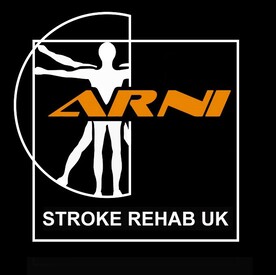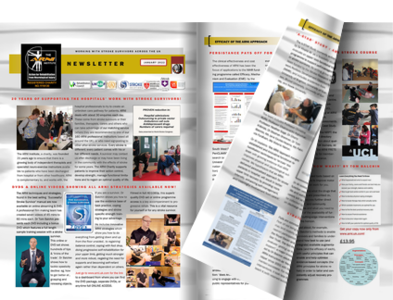Motivation
for doing training the ARNI way
I have decided to post an article myself about ‘motivation’ in recovery from stroke. At ARNI we are committed to assisting stroke survivors to reactivate neurological ‘self-healing mechanisms. We believe that the harnessing the power of the mind is critical to the further positive developments of our clients.
From my research, particularly delving into motivational theory, I have found that ‘motivation’ is an internal state that activates behaviour and gives it direction. Given that the environment is generally unfriendly to innovation (Lewis 1989, Piirto 1992, Torrance 1962, Torrance and Myers 1970) motivation must encompass powerful conditions such as: drive, determination, hard work, persistence, desires and needs. Franken (1994) calls it “…the arousal, direction and persistence of behaviour.” It can be seen that it is difficult to present new developments such as ARNI; indeed throughout history nearly all innovations have come from specialists applying their knowledge to new fields (thus becoming seen as amateurs in those domains).
Arousal, or motivation to do something, is immediately different from emotion, in that emotion does not necessarily carry goal orientation, but occurs as a result of interaction between perceptions of environment stimuli and neural/hormonal responses to these perceptions (feelings). Thus, we all have the potential for similar core emotive levels, but not necessarily for the similar motivational levels.
My research into creativity has revealed a pattern; motivation runs like a ribbon throughout the creative process. If this vital factor is missing at any point, the whole process is going to fail no matter how developed the rest of a person’s knowledge and skills are. Crucially, motivation is involved in stopping tasks. Unmotivated people will quit when having difficulty because they believe failure is caused by lack of ability which he/she can’t do anything. This is undoubtedly so.
I have designed an instructional design model for motivation that ARNI instructors use.
- arousing interest
- creating relevance
- developing an expectancy of success
- producing satisfaction
Much of the literature on motivation concentrates on the last point. Sources of motivation are seen to be two-fold; the individual’s baseline attitude towards the task and his or her perceptions of the reasons for undertaking the task in a given instance. These are respectively, intrinsic and extrinsic motivation. Both are equally involved to produce a base-line attitude towards a task, which is formed when individuals perform a cognitive assessment of this potential task and of the degree to which it matches his or her existing preferences and interests.
I reckon that there is a world of difference between a wish, a dream, a want, and a goal. My mother used to tell me, “if wishes were horses then beggars would ride.” No offence against the downtrodden, but what my dear old mum was telling me was that wishes will not take the place of hard work! Today, you see so many gyms cropping up all over town, but people today are fatter and weaker than ever before! Wanting to change isn’t enough. Thinking that it would be really nice to get that arm a bit higher is merely a “dream.” Hoping that it will happen on its own is a “wish.” Hoping that you will get there, and trying with a half hearted effort is a “want.” Doing your homework and charting a path to take you there, busting your arse day in and day out, pushing yourself ever closer to what you want and all the while achieving little landmarks along the way… THAT is pursuing a GOAL. It is an intrinsic goal. the person that comes to ARNI MUST WANT TO GET BETTER.
Let me stress that we do not propound that the way to achieve success in stroke recovery is to become fanatical. Intrinsic means innate; hence this motivation is the stimulation or drive stemming from within. This is a time-thing, not a look-at-me go thing. that’s the quickest way to self-defeat.
The desired motivational state is generated by the individual’s reaction to the intrinsic properties of a task and not generated by extrinsic factors, however it is often associated with intrinsic rewards because the natural rewards of a task are the motivating forces that encourage the individual in the first place. The basic idea is that something is worth doing for its own sake.. and what could be more worthwhile than sorting yourself out after stroke? Remember, unmotivated people will choose easy tasks and avoid success-related tasks and work with little drive or enthusiasm, often because they doubt they own ability or assume success is related to luck or other factors out of his/her control. This isn’t true; let me show you a little of what is involved
To join ARNI, firstly we ask that people really need to be honest with themselves. (It’s not an easy thing to do). Is this something that you feel you CAN go after with the required intensity? If you think that you want this new movement but you are pretty sure that somewhere in you you will probably do as little as you need to get it, then you are probably just wanting it and not actually setting the achievement as a goal. When you really are gearing up, the hardest thing you will have to face is holding yourself back from doing too much. TRUE goals are something that you want so badly that nothing can stop you! It is the difference between commitment and involvement. Ed Parker, the late American Kenpo Karate grandmaster described the difference between commitment and involvement as, “ham and eggs. The chicken was involved but the pig was committed!”
We help you to shape, and support, your intrinsic commitment at ARNI by guiding your training with short term and long term goals. We say to clients “…do not let anything sway you from your path! Learn that the when setting goals, there is so much at stake that nothing can stop you! Then slowly increase the level of difficulty of each goal! Be just as progressive yourself about training your goal-setting talents as you are about training! Continue this low-level goal setting as you pursue a long-range goal as well.”
In stroke recovery it is about going after things that you know for certain will be attainable and congratulating yourself on the achievement. This leads to the enjoyment of training. In this sense, intrinsic motivation can be viewed as both a state and a trait, and by necessity runs throughout the creative process. A person is said also to be intrinsically motivated to engage in an activity if such engagement is viewed as an end in itself and not as a means to some extrinsic goal. Martindale (1989) illustrates this point; “…intrinsic rewards are those that arise from performing a task; that is, the task is interesting and pleasurable in itself.”
Enjoyment is a large part of motivation. I believe that success, once experienced, becomes a strong driver for seeking similar gratification at later times. Csikszentmihayli (superb author on creativity) found that creative people spoke of the excitement, joy, fun and satisfaction they have during the process of creation: “…perhaps the most important quality, the one that is consistently present in all creative individuals, is the ability to enjoy the act of creation for its own sake.” (Csikszentmihayli 1996) I think this is true too.Think about it! We say that nothing breeds success like success, and if our client is facing a new personal record that is within his/her range, they have clearly been successful prior to this! We ask them to focus on that… to feed off their own triumphs and allow them to be happy about them!
There is also no doubt that if an individual finds an activity unpleasant or boring, there is less intrinsic motivation to engage in it. If he or she finds another activity stimulating or fun, intrinsic motivation is present. The ARNI group therefore seeks to capture this by its own instrinsic attitude. Never forget that your mind is the greatest tool you have in your arsenal.
“The mind is it’s own place and in itself can make a heaven of hell or a hell of heaven.” – Milton
“Whether you think you can or think you can’t….you are right.” – Henry Ford

